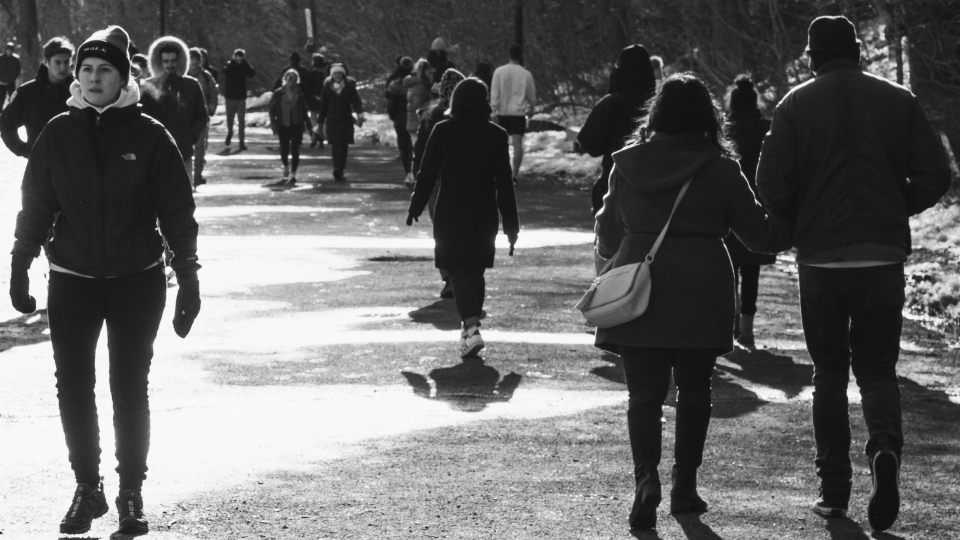THE QUICK WAY TO UNDO YOUR SEDENTARY HABITS
Been stuck behind a desk all day? You can undo the perils of sitting in just a few minutes according to scientists who recently tested different strategies to break up an 8-hour day in the office. On a mission to unearth the least amount of activity to offset sedentary behavior, these researchers found a five-minute light walk every half-hour was the winning way to cut blood sugar levels. This brief but regular activity also limited blood sugar spikes after eating by almost 60 percent and reduced blood pressure by four to five points (although the researchers note that even just one minute of light walking can also reduce blood pressure). This regular short walk provided mental perks too. Study participants reported reduced feelings of fatigue, more energy and a better mood when they walked once or twice every hour.
A five-minute light walk every half-hour was the winning way to cut blood sugar levels.
Another study has revealed adding as little as 500 extra steps to your day can help improve your heart health. Researchers tracked 450 older participants for over three years and found that every additional 500 steps per day (the equivalent of walking about 400 meters) was associated with a 14 per cent lower risk of heart disease.

IS 11 MINUTES A DAY ENOUGH EXERCISE?
Taking a brisk 11-minute walk each day (the equivalent of 75 minutes of moderate-intensity exercise a week) could be enough exercise to help cut the risk of heart disease, stroke and a number of cancers. These findings come after University of Cambridge researchers completed the largest analysis of its kind, reviewing results from 196 peer-reviewed articles, covering more than 30 million participants from 94 large study cohorts. The researchers say that if everyone managed this small dose of daily movement (which equates to 75 minutes of moderate-intensity exercise a week) one in ten early deaths could be prevented. By doubling that dose and getting in the recommended 150 minutes a week, one in six early deaths could be prevented. A short walk isn’t the only option – the scientists advise that dancing, bike riding, tennis, or actively playing with children are also excellent ways to become more active.
HOW MOVING MORE HELPS MENTAL HEALTH (BETTER THAN MEDICATION DOES)
Australian researchers have recently raised the importance of prioritizing physical activity when it comes to managing depression, anxiety and stress. After analyzing 97 reviews, 1039 trials and data from 128,119 participants, the researchers found that physical activity was 1.5 times more effective than counseling or leading medications when it comes to managing depression. Interestingly, the scientists observed that exercise had the most powerful mood-boosting effects within the first 12 weeks of starting a new regime. While all types of physical activity were beneficial, short and mid-duration bursts seemed to be superior, and higher-intensity exercise showed greater improvements in depression and anxiety.

MORE MOVEMENT EQUALS MORE BRAIN POWER
Getting more young people into physical activity could be the secret to improving attentional control and driving better academic outcomes. A group of 418 teenage girls were recently involved in a study where over seven days their activity levels were tracked by accelerometers and cognitive tasks were measured via computers. The researchers found that those recording less intense physical activity required more time to complete cognitive tests and their results were less accurate. These findings are particularly pertinent as more than 80 per cent of 11 to 17-year-olds don’t meet the physical activity guidelines, so there is plenty of opportunity to get more young people moving, boost their health and fitness, and lift academic performance too!

PHYSICAL ACTIVITY CHANGES HOW YOUR GENES BEHAVE
It seems the markers of metabolic disease are not pinned down by inherited genetics alone – researchers have found they can be strongly influenced by your physical activity levels. After analyzing 70 pairs of identical twins, scientists found that the siblings who were more physically active had reduced markers for metabolic disease. The scientists say it reveals a molecular mechanism for the link between physical activity and metabolic disease and indicates that consistent exercise can alter the molecules in the body that influence how genes behave. “Physical exercise is known to reduce the susceptibility to obesity, but now it looks like exercise through epigenetics is affecting a lot of cell types, many of them involved in metabolic disease,” said Michael Skinner, a biologist at Washington State University.
INACTIVITY AND LONG COVID MAY GO HAND IN HAND
While Covid cases may no longer be in the headlines, experts believe that up to 30 percent of those who have been infected could continue to suffer well after recovering from the initial acute stages of the illness. This is referred to as post-acute sequelae of SARS‐CoV‐2 infection (PASC), or simply ‘long Covid’. A recent study by Brazilian scientists has shown that the likelihood of suffering from long Covid symptoms could be linked to inactivity. They found that when people experienced joint or muscle pain, fatigue, post-traumatic stress, insomnia, and dyspnea in the six to 11 months post-illness it correlated with a higher likelihood of physical inactivity. But interestingly, only some long-Covid symptoms seemed to be influenced by activity levels – as depression, memory impairments, anxiety, and smell and taste loss were not significantly matched with how much people moved. Learn more about the link between long Covid and exercise.








